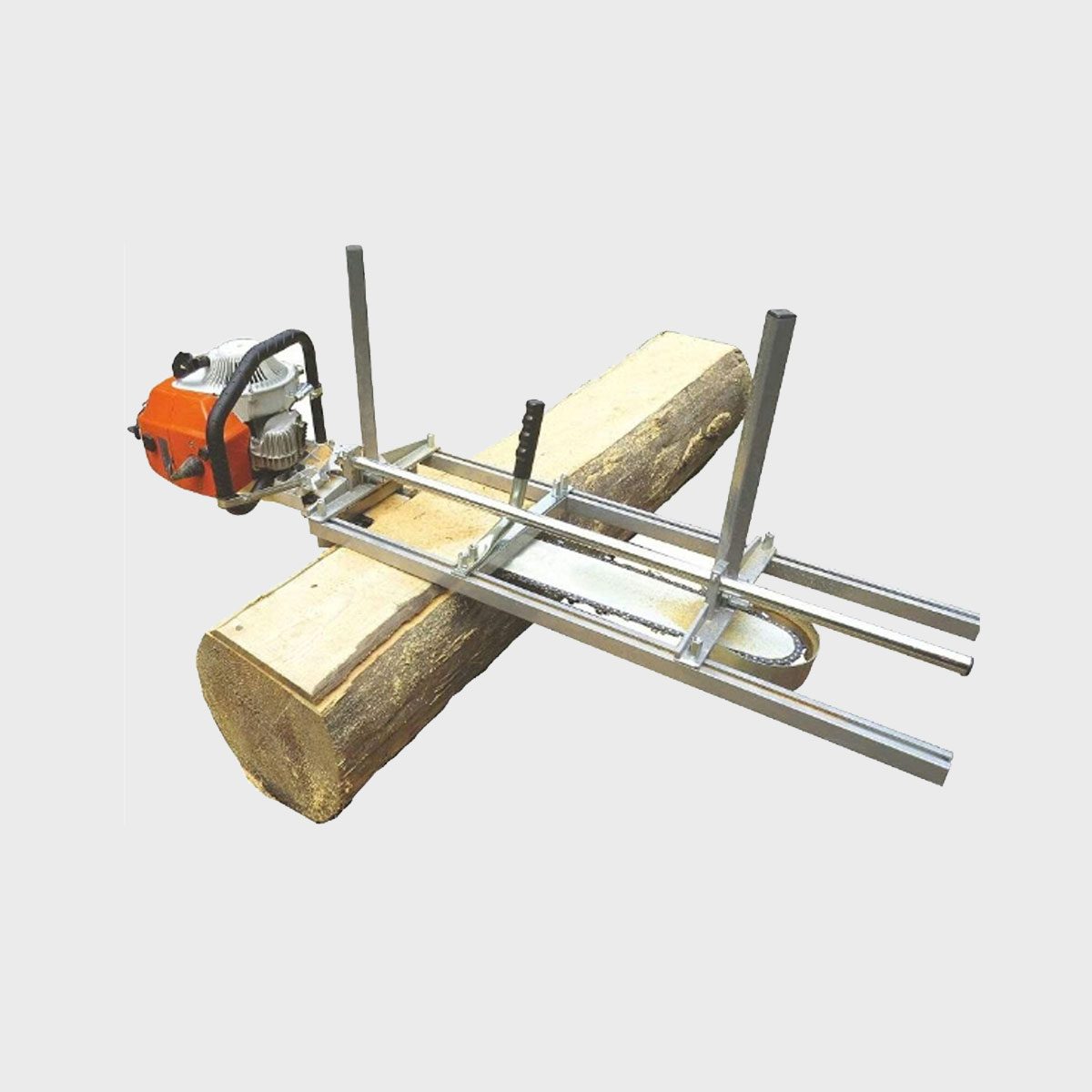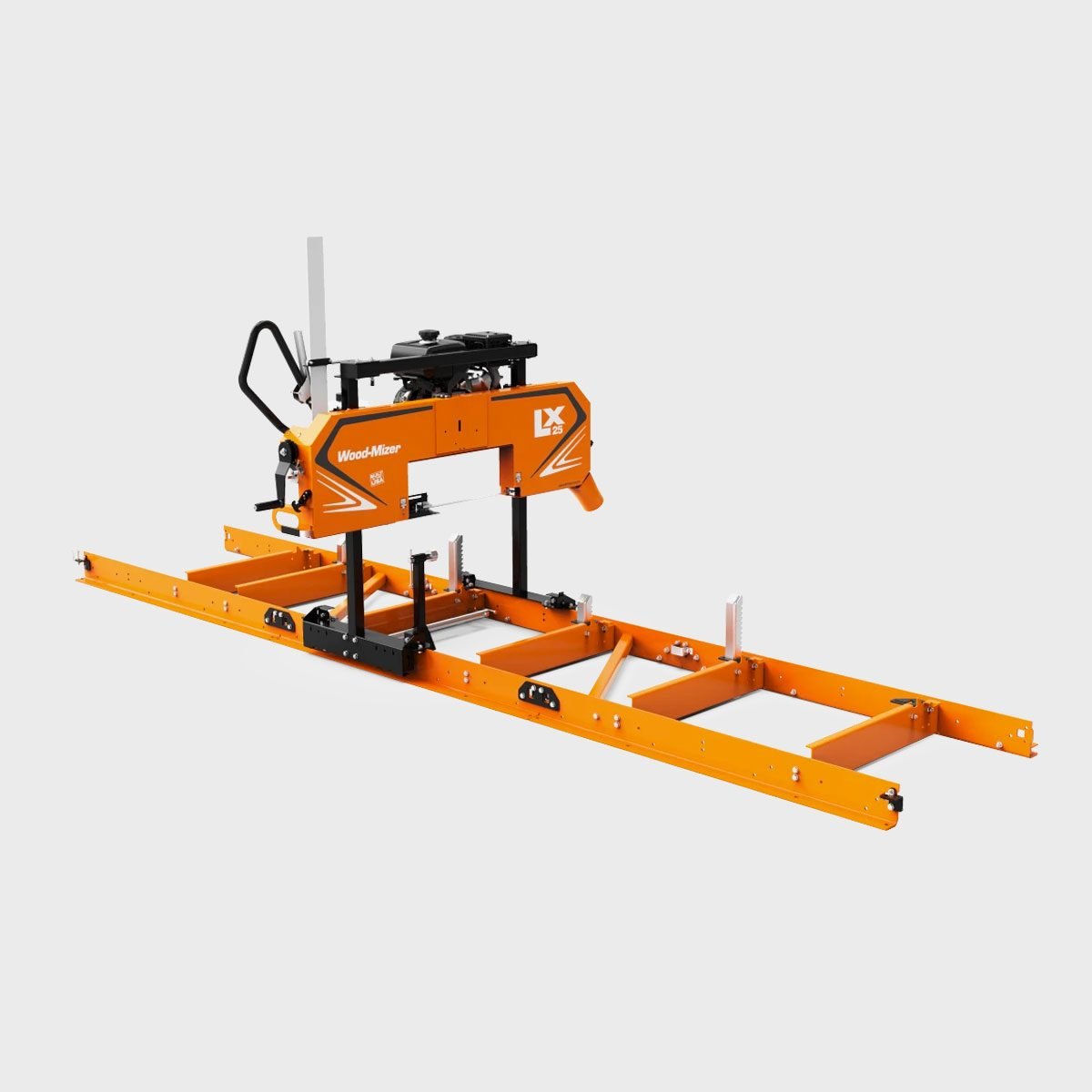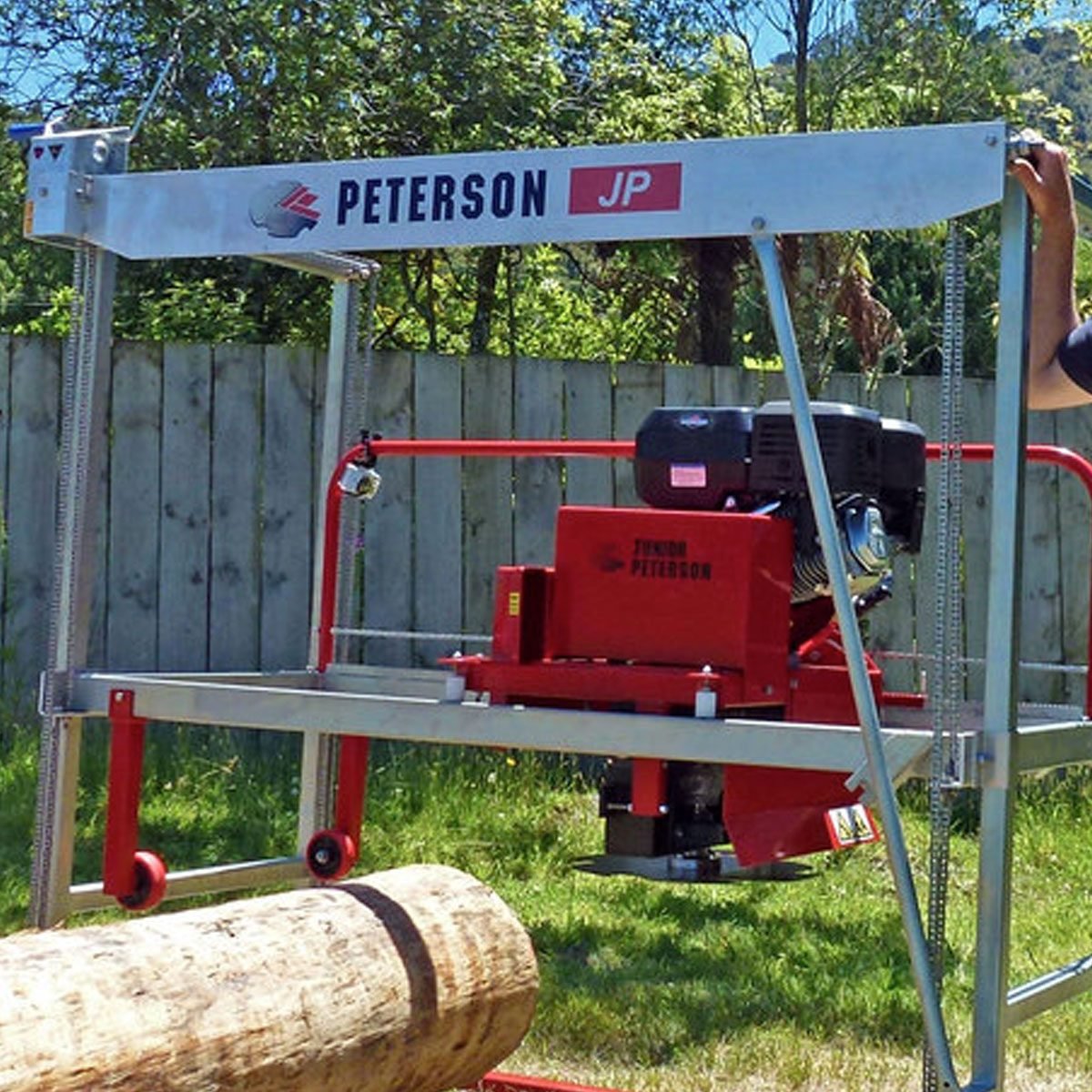Lumber prices increased during the pandemic. Although prices came down when some lumber shortages were resolved, other factors, such as dwindling forest supplies, probably will be with us for the foreseeable future. That means prices are likely to remain volatile.
And that makes sawing your own lumber an increasingly smart decision, assuming you have a ready supply of suitable logs.
A full-scale lumber producer has the means to transport the logs to the sawmill. But to turn your own fallen trees into lumber, you’ll need to bring the sawmill to the logs. There are plenty of portable sawmills on the market, but increasing demand lengthened wait times to a year or more for some of the most popular models.
In any case, most DIYers should choose a chain saw mill. These are far and away the least expensive portable option and the easiest to deploy. There’s no wait time if you order one of these.
What Is a Portable Sawmill?
A portable sawmill is a track that clamps to a log, allowing you to make straight cuts with your chainsaw. Bigger, more expensive and more efficient units come with a bandsaw or circular saw sized for milling logs. Some have cradles to hold logs, but some cut logs in place.
Users may have to load logs onto the cradles of less-expensive machines with a log peavey or cant hook. Both are long-handled log-turning tools. But top-of-the-line portable sawmills come with hydraulic log loading systems.
Why would you want a portable sawmill? For one reason: to mill your own lumber. The alternative is selling your seasoned logs to a sawmill for transport to their facility. That’s easier than milling them yourself, and while it might generate income, it isn’t as cost-effective.
A portable sawmill gives you a ready supply of lumber for free. Considering lumber prices, it can quickly pay for itself.
Types of Portable Sawmills
If you do a quick search for portable sawmills, you’ll find that most are chain saw mills. They are the least expensive, most easily transportable and most DIY friendly, but not the most efficient. Two other kinds work faster and produce better results. Here’s a rundown of the three types available:
Chain saw mill
This is merely a metal track that clamps to a log and guides the saw through the wood. You have to supply the saw.
A reliable model accepts saws with bars from 10 to 36 inches long (and longer) and costs less than the saw itself. It’s a great option for large logs, because it lets you do the milling without moving the log.
Band saw mill
Basically, this is a super-large and heavy-duty version of a shop band saw, with a few key differences. The blade housing is positioned over a conveyor track and the blade oriented parallel to the track, so the saw cuts logs on the horizontal rather than vertical plane. The housing typically glides along a track to cut a stationary log.
Circular saw mill
Circular saw blades mill lumber faster than other blades, and most large-production sawmills use them. To make this technology portable, a circular saw is typically mounted on an overhead, moveable track and cuts through a stationary log.
An innovative example is the swing-blade sawmill, which lets you rotate the saw 90 to 180 degrees and slice boards of accurate depth and width without moving the log. That’s unique to this type of sawmill.
How to Choose a Portable Sawmill
Choose based on need. If you’ve got one or two logs you want to turn into beams or posts, a chain saw sawmill is fine. It works slowly, and the wide kerf (thickness) of the saw blade means it wastes wood. But it will do the job without moving the log.
People interested in actual lumber production, for their own project or for sale, are better off with a bandsaw or swing-blade sawmill. These tools cut faster and more accurately than a chain saw. Their blades with thinner kerfs produce less sawdust and waste less wood.
Of these two, the band saw mill is the more popular. The blade has the thinnest possible kerf, it’s less likely to be damaged by metal in the wood, and you can send it to the shop for re-sharpening. (Typical cost is around $10 per blade, plus shipping.)
On the other hand, circular saws produce straighter, more accurate cuts. They excel with large-diameter logs, although they don’t work as well as a band saw for milling small logs.
How Much Do Portable Sawmills Cost?
As you might expect, chain saw mills are the least expensive. They average around $100, although some models cost as much as $300.
Band saw mills start at around $4,000 for an entry-level model. A top-of-the-line machine, with a hydraulic loader and attachments for planing and sanding, can handle extra-wide logs. They cost as much as $70,000.
Prices for a swing-blade sawmill can range from $6,000 to $40,000, with $20,000 about average. You’ll pay extra for attractive add-ons like a planer, orbital sander, and a router bit for producing tongue-and-groove boards straight off the mill.
Best Portable Sawmills
The best sawmill for you does the job within the parameters you set for it. If you’re milling lumber for personal use, here are some top choices:
Best chain saw mill

The Imony 36-inch Portable Chain Saw Mill is easy to deploy and accepts chain saw bars up to 36 inches, suitable for pretty hefty logs. Made of aluminum and steel, it’s lightweight and strong.
Best band saw mill

The Wood-Mizer LX2515 accepts logs up to 26 inches in diameter. You’ll want this only if you’re interested in moderate to large-scale lumber production. The log clamps firmly into the cradle while the operator turns a crank to move the saw along a track to slice it into boards.
It’s a basic machine at an affordable price. One of its most attractive features is Wood-Mizer’s reputation for good customer service.
Best swing-blade saw mill

It’s tough to find swing-blade sawmills at retail outlets. But if you’re prepared to go to the source, the Junior Peterson is worth the effort. Specifically for home and farm use, it sets up in five to 10 minutes and mills a log in place — no forklifts or winches needed.






